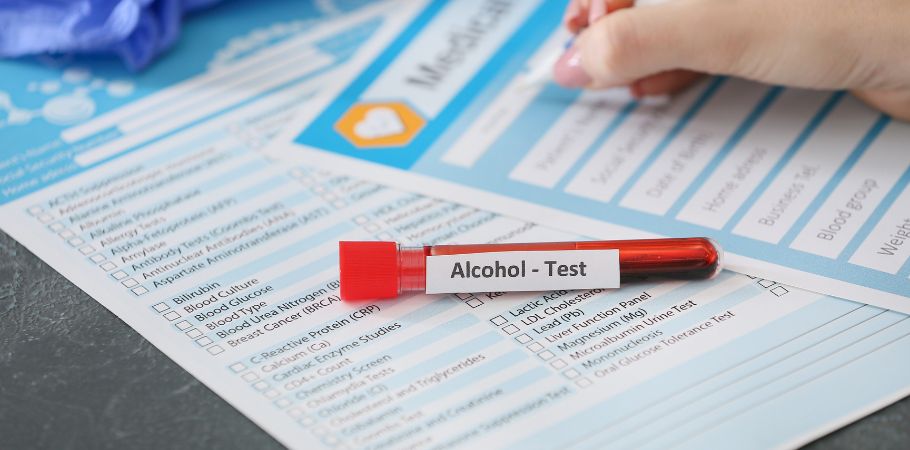
How accurate are blood tests for alcohol? There are two primary methods used to measure a suspected drunk driver’s bodily alcohol content for criminal prosecutions: breath and blood tests.
Breath tests are more frequent because of the ease of administration and quick results. Blood tests are conducted typically when a breath test is refused or when a breath test is not practical due to accident, injury or medical issue. Those arrested for suspicion of DUI that have submitted to a blood test may wonder if they’re worse off than those having submitted to a breath test.
This isn’t necessarily true.
Facing DUI charges? Unhappy with your current attorney? Request a free consultation now.
There are more sources of error in a blood test and typically include the following:
1. Delay in Sample Collection
A blood alcohol test requires a blood sample be collected off site and after the attempted administration of a breath test. This usually means that the collection does not occur for up to two hours, or more, after driving. Because there is a delay in the blood collection the result is usually not an accurate reflection of the alcohol content at the time of driving which is what is most important. A suspect’s BAC is never the same at two different times. It is either rising or falling depending upon the amount of alcohol consumed, the time of the last drink and rate of absorption and elimination.
This is also affected by body weight and gastric contents. Because law enforcement rarely has the information necessary to make that determination, a person’s BAC may be difficult to determine by the prosecution but easier for the defense.
2. Ensuring Sample Collection was Reliable
Michigan law requires that only a physician or a qualified individual operating under the direction and supervision of that physician perform the blood draw and using a specific blood collection kit with specific instructions. The law also requires that the blood draw be performed in the proper medical environment. There are many requirements here that if not followed could be used to argue the blood result is not reliable and/or otherwise inadmissible. If the sample was collected by a paramedic at the jail a good challenge can be made.
Typically, fire department paramedics are not supervised by a doctor.
3. Delivery of the Sample Must be Timely
The blood sample must be delivered, either by hand or us mail, immediately after collection. There exist preservatives within the collection tube to ensure against spoliation, clotting and alcohol fermentation. The date the sample was received by the lab is reported on the results. It must be inspected in every case. It’s not infrequent that the blood was stored somewhere before mailing. Sometimes in the back or trunk of a police car.
If there’s a delay in delivery, legitimate questions exist like why, where was it and was it refrigerated or subjected to high temperatures. Anything other than prompt delivery will place the reliability and accuracy of the sample in question.
4. Analysis of the Blood Sample is Performed on a Large Scale
The Michigan State Police Forensic Science Division is responsible for performing the analysis of the blood for identification, quantification and reporting. The MSP-FSD is overworked and understaffed. They use a method called headspace gas chromatography using a flame ionization detector system. This method is reliable but only when the sample is prepared properly and the ethanol standards used for comparison are properly measured and stored. The lab typically analyzes approximately 65 unknown samples at a time which is a large number. It generally takes several hours to prepare each of these samples for analysis along with the standards and controls necessary for each run.
As one can imagine, the higher the number of sample preparation necessary for analysis, the higher the rate of error. Further, if the instrumentation isn’t working at optimal levels, the analysis can be susceptible to “carry over,” meaning that alcohol from one sample can carry over to another. When carry over has been identified, the entire run must be repeated. The problem is re-doing an entire run is time intensive. For a department that’s already overworked, it’s less likely to happen. In order to evaluate the reliability of a blood analysis, the data from the entire run needs to be reviewed.
5. Reporting of Sample Can Be Misleading
On its face, the FSD reports what it calculates as its uncertainty of measurement, which can be approximately 10%. It changes every year and that number is subject to scrutiny as the FSD are the ones who calculate it. If an outside organization were to calculate it, the number would likely be higher due to bias. Remember, the Forensic Science Division is a part of a law enforcement agency.
How Accurate Are Blood Tests for Alcohol?
So, how accurate are blood tests for alcohol? Blood alcohol testing can be a reliable and accurate manner of bodily alcohol content only when each of the several stages has been verified for proper performance. Because there are so many different sources for potential error a blood test can have a higher rate for error than a breath test. In other words, there are many different angles to demonstrate a reasonable doubt in a blood test’s accuracy and reliability.
Facing DUI charges? Unhappy with your current attorney? Request a free consultation now.
